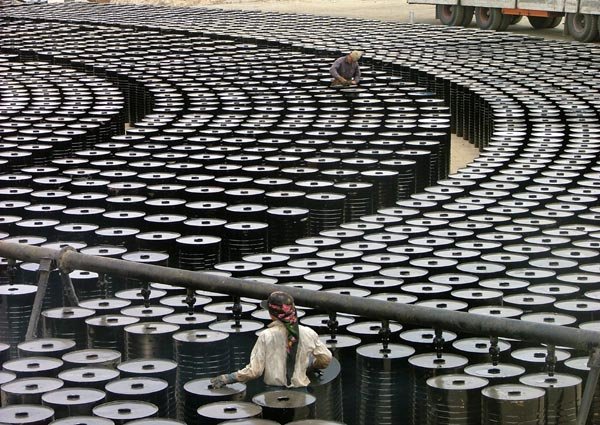Nearly 60,000 tons of various commodities, valued at more than 583 billion rials were traded at the Iran Mercantile Exchange spot market in an abysmal trading day on Sunday.
According to IME public relations, close to 7,280 tons of corn with base price of 6,650 rials per kilogram was offered at the agricultural trading floor. In addition, 1,300 tons of corn from Khorasan Razavi Province, priced at 7,120 rials per kilogram was offered at the board.
The oil and petrochemical trading floor was host to 23,030 tons of vacuum bottoms from Bandar Abbas, Shiraz and Esfahan oil refining companies. Moreover, 11,500 tons of lube-cut oil, 8,954 tons of chemicals, 853 tons of polymers, 300 tons of sulfur, and 10 tons of argon gas were also offered at the board.
The export trading floor experienced a sluggish trading day, with only 2,710 tons of bitumen-6070 registered for export.
Bitumen, Vacuum Bottoms at the Spotlight
Bitumen and vacuum bottoms trade volume has improved over the past month, projecting a dynamic market ahead as the warm season approaches, said Saman Montazeri, a market analyst to imereport.com.
“Bitumen export is also expected surge in the coming months if a final nuclear accord is reached between Iran and the P5+1 (the five permanent members of UN Security Council plus Germany),” he added.
More than 282,000 tons of bitumen was traded at the IME since April 21, surpassing last month’s trade volume.
Bitumen Export via Bandar Lengeh Port
Esmail Makizadeh, the manager of Bandar-e Lengeh Port in Hormozgan Province on Sunday announced the shipment of the first bitumen cargo in the current Iranian year (started March 21) to United Arab Emirate (UAE).
Around 3,100 tons of bitumen was exported to the UAE, said Makizadeh, adding: “China, Thailand, Vietnam, India and the UAE are among the major buyers of Iran’s bitumen.”
He mentioned vicinity to UAE’s ports, easy access to the national road network and close distance to Strait of Hormoz and international waters as some advantages of Bander-e Lengeh, turning it into a maritime trade hub in the Persian Gulf.


